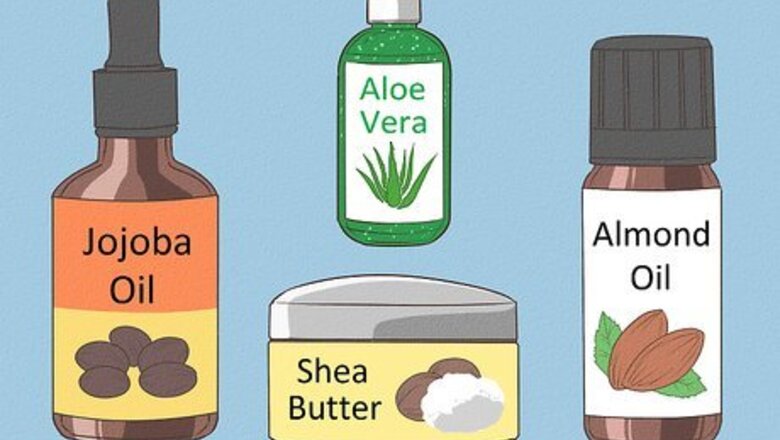
views
Beginning the Massage
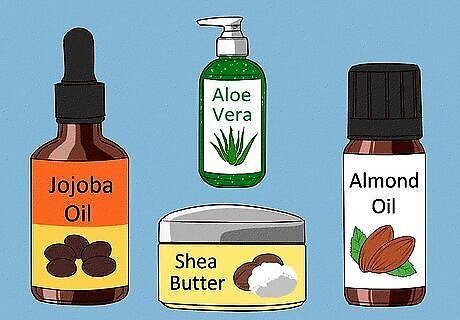
Choose a massage medium. Massage mediums include mineral oils, moisturizing balms, and hand cream. Mineral oils and massage balms are messy but will provide a long lasting massage lubricant. Alternatively, hand cream is less messy but may need to be reapplied throughout the massage. Look for one or more of these nourishing ingredients in your massage medium: Jojoba oil makes your skin supple. Aloe vera hydrates your skin. Shea butter seals in moisture and prevents cracking. Almond oil deeply moisturizes your skin. However, people with nut allergies should avoid this oil.

Create a calming ambience. The key to a good massage is relaxation. Prepare your workspace by laying a plush towel down to protect your work surface from the massage medium. Next, create an ambience by playing calming music and lighting scented candles. Other ways to create a calming ambience include: Providing a glass of wine or cup of hot tea Providing a soft, comfortable chair Draping a warm blanket around yourself or your client

Talk about painful spots. If you’re massaging someone else, ask them to identify painful areas in their hands. Tell them that the massage will provide a pleasant pressure but should not hurt. If they experience any pain, they should say so. Otherwise, they may bruise. If you’re massaging yourself, be careful with your own painful areas. The massage should never be uncomfortable.
Massaging the Hands
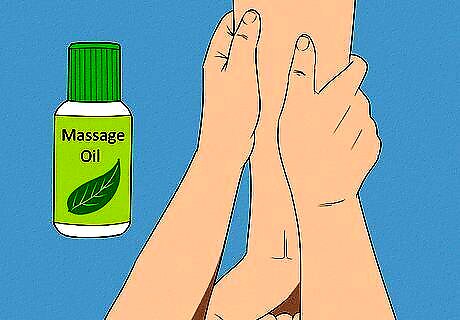
Apply the massage medium. Warm a dime-sized portion of the medium by rubbing it between your hands. Next, spread the warmed medium along the forearm and on both sides of the hand that will be massaged. Use slow, relaxing motions as you work to continue warming the medium. Examine the skin for abrasions and cuts. If you see anything suspicious, don’t do the massage. Otherwise, you’ll risk irritating a wound and causing an infection.
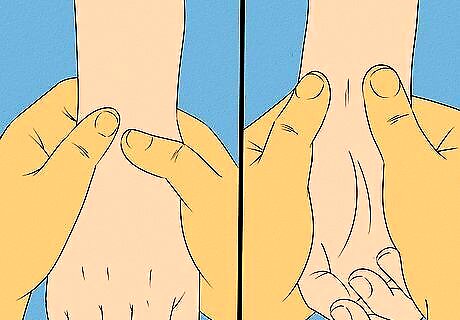
Massage the wrist. Face the palm down. Press with your thumbs and make little circles around the wrist bones. Move up and down the wrist as you work. Next, turn the wrist over and stroke the inside of the wrist with your thumbs. Press firmly and stroke towards the palm and back to the wrist. If you experience intense pain during a wrist massage, see a physician. You may have an underlying issue such as Carpal Tunnel Syndrome.
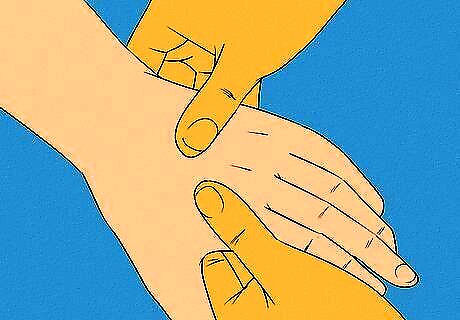
Stroke the top of the hand. Turn the hand over and begin massaging the top of the hand with your thumbs. You will feel several long, thin bones leading from the wrist to the fingers. Apply pressure with your thumbs and slowly stroke the hand back and forth. Your stroke should move towards the knuckles and then back towards the wrist. Pay special attention to the areas between the bones. These areas contain important tendons that can cause hand pain. The skin on the back of your hand is very thin. Make sure it’s well lubricated to prevent discomfort.

Massage the fingers. Start with the pinkie and work towards the thumb, massaging one finger at a time. Gently pinch the base of each finger between the knuckles of your index and middle finger. Next, slowly drag your knuckles down to the tip of the finger, squeezing gently. Repeat this process several times. Gently pinch the webbing between the fingers for a tendon massage. Pay special attention to finger joints, especially if the person getting massaged experiences joint pain. Do so by rubbing each one gently to release any tension.
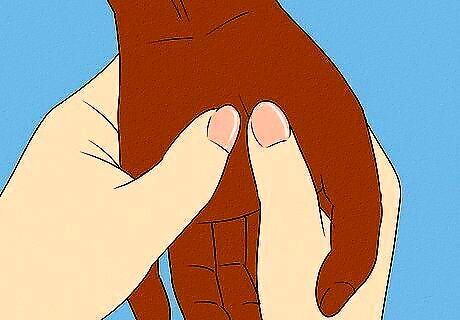
Rub the palm. Stroke the palm with firm, even motions that move away from the wrist. Focus on the pad of the palm and the fleshy side of the hand. Then, massage the center of the palm using circular motions. The palm contains many powerful muscles and tendons. Therefore, you may need to apply more pressure when massaging this part of the hand. EXPERT TIP Will Fuller Will Fuller Certified Massage Therapist Will Fuller is a Certified Massage Therapist and Wellness Educator working in San Francisco, California. Will has worked with the Sports and Recreation Center at the University of California, San Francisco (UCSF), taught sports in England, Kenya, and Kuwait, and is now affiliated with the Chiro-Medical Group. He was trained in physical rehabilitation under a program founded by Dr. Meir Schneider. He has a Bachelors in Sport Science and a Post-Graduate Certificate of Education in Physical Education from Southampton University. Will Fuller Will Fuller Certified Massage Therapist Massage with your fist or knuckles to work the fleshier tissue of the hands. Overusing your thumbs to give massages can lead to an overuse injury in your hands and thumb muscles.
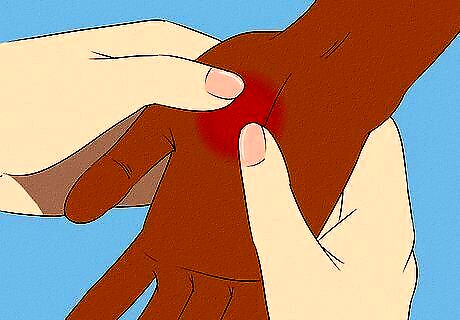
Target areas with pain. Use small, precise strokes to rub areas that are especially painful. Rub the skin back and forth across the area or pinch it gently to release tension. However, be sure not to rub so hard that you cause any discomfort. Start with light, gentle motions and add more pressure as the massage continues. This will allow you to gauge the right pressure for painful spots.
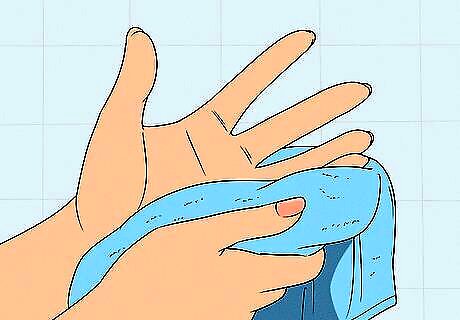
Wipe away the massage medium. When you’ve finished the massage, use a warm towel to wipe away excess massage medium. Allow the rest of the massage medium to soak into the skin before washing your hands. If you wash your hands too soon, you will wash away the nourishing massage medium.
Using Alternative Massage Methods
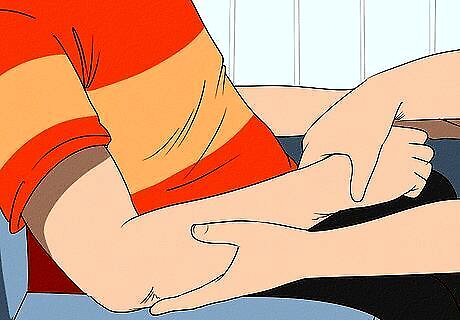
Massage the elbow. The elbow can be a surprising source of wrist and hand pain. Use your thumb to create small, circular motions around the bones of the elbow. Make sure to massage all around the elbow, but target the inside of the elbow to massage important tendons.
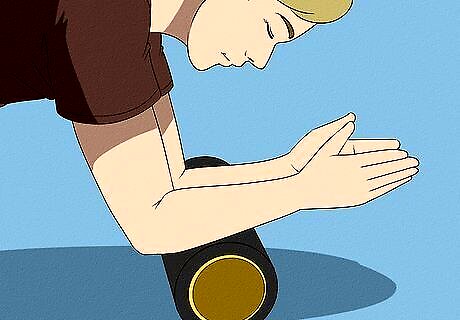
Massage the forearms. Use your hands or a foam roller. Use long, broad strokes to loosen up the larger muscles in the forearms. This will reduce tension in the entire arm and relax the tendons in your hands. Roll a tennis ball along your forearm to massage the tendons that stretch from the elbow to the wrist. This can help reduce wrist pain. You can massage the forearms before or after the hand massage.
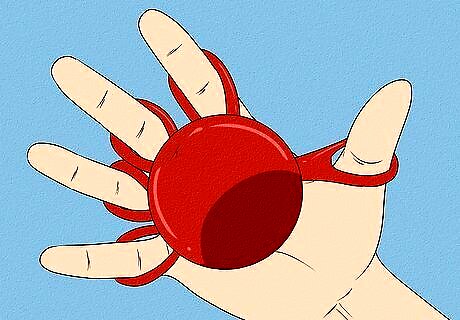
Purchase a specialized hand massage tool. After massaging the hands with your fingertips, use a massage tool to pinpoint painful areas. Specialized massage tools are usually plastic or metal and have several rounded protrusions along the outside. These protrusions can be pressed into painful muscles to work out the knots. These massage tools can be bought online or from a massage tool distributor. Make sure to follow the directions when using a massage tool. If you don’t, you may injure yourself.
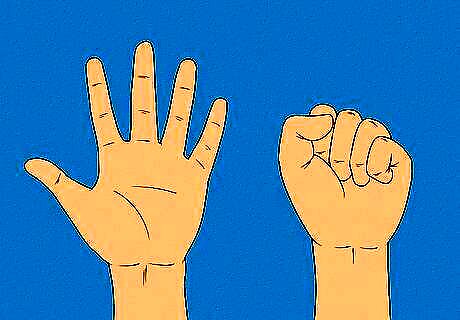
Do some hand stretches. Do some hand stretches to loosen up before a hand massage or afterwards to continue relaxing your muscles. You can also do hand stretches at any time throughout the day to reduce muscle pain. Some great hand stretches include: Spreading your fingers as wide as you can for five seconds Curling your fingers into a fist Carefully pulling your thumb back towards your wrist Gently pushing your fingertips towards your forearm




















Comments
0 comment